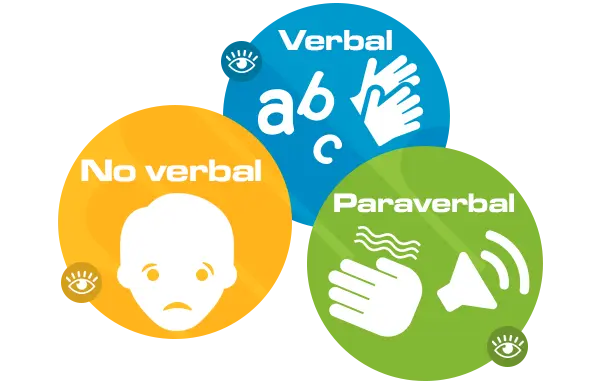The art of communication is a multifaceted skill, one that holds the power to build bridges, shape relationships, and transform experiences. It’s not merely about exchanging words, but also about understanding the emotions and intentions behind those words. Many people struggle with shyness, insecurity, or a lack of self-confidence, which can hamper their ability to communicate effectively. Struggling with these issues is not a personal failing – in fact, it’s a common human experience. But these hurdles can be overcome. This book, “Conquer Your Conversations: A Comprehensive Guide to Banish Shyness, Boost Confidence, and Master Effective Communication,” is designed to be your roadmap to overcoming these communication barriers. We’ll delve into the heart of what makes communication effective, exploring topics from the importance of self-confidence to the nuances of non-verbal communication. We’ll show you how to navigate small talk, break the ice with unfamiliar people, and deal with social anxiety. The aim is not just to equip you with the tools to communicate more effectively, but also to empower you to express yourself authentically and confidently in any situation. So whether you’re looking to improve your personal relationships or your professional interactions, this book is designed with you in mind. Let’s embark on this journey together towards mastery in communication.
Understanding Shyness and Insecurity

Shyness and insecurity are two common barriers to effective communication. People who are shy or feel insecure often have a hard time expressing themselves or connecting with others. They might avoid social situations out of fear of being judged or misunderstood. This chapter will delve into the sources of these feelings, how they affect our communication, and practical steps to overcome them. We’ll explore techniques to build confidence and reduce shyness, so that you can approach conversations with ease and authenticity.
Building trust and empathy are essential components of effective communication. When we trust someone, we feel comfortable opening up and sharing our thoughts and emotions. And when we empathize with others, we understand their perspective and can communicate more effectively. This chapter will show you how to cultivate trust and empathy in your relationships, through both verbal and non-verbal cues. We’ll also discuss the importance of active listening and validation in building strong connections with others.
Mastering Conflict Resolution

Conflict is a natural part of any relationship, but it can be challenging to navigate. Effective communication skills are crucial for resolving conflicts peacefully and maintaining healthy relationships. In this chapter, we’ll cover strategies for handling difficult conversations and resolving conflicts in a constructive way. We’ll also discuss the importance of setting boundaries and communicating assertively to prevent conflicts from arising in the first place.
While words are important in communication, our body language, tone, and other non-verbal cues play a significant role as well. This chapter will delve into the secrets of non-verbal communication, including how to read and use body language effectively. We’ll also discuss cultural differences in non-verbal communication and tips for improving your own non-verbal skills. By mastering non-verbal communication, you can enhance the effectiveness and authenticity of your conversations.
Authenticity is a crucial ingredient in effective communication. When we are authentic, we express our true selves without fear of judgment or rejection. In this chapter, we’ll explore the barriers to authenticity and how they impact our communication. We’ll also discuss practical techniques for being more authentic in our conversations, including being vulnerable and using active listening skills. By embracing authenticity, we can build deeper connections and communicate more effectively.
The Power of Paraverbal Communication

Paraverbal communication includes elements such as tone, pitch, and volume of our voice. These aspects can greatly impact how our words are perceived by others. In this chapter, we’ll explore the key components of paraverbal communication and techniques for using your voice effectively in different situations.
In this final chapter, we’ll bring together all the skills and strategies discussed throughout the book to provide you with some practical tips for effective communication. These tips are designed to be applicable in a variety of situations, whether it’s a casual chat with a friend or a professional meeting. By implementing these techniques and continuously practicing, you can conquer your conversations and become a master communicator. So let’s get started on this journey towards improving our communication skills! Remember, effective communication is not just about the words we use but also about understanding ourselves and others better. Let’s embrace authenticity, empathy, and confidence in our conversations to build stronger connections and lead more fulfilling lives. So don’t let shyness, insecurity, or lack of self-confidence hold you back any longer – use this book as your guide and conquer your conversations! Keep practicing, keep learning, and keep communicating effectively with those around you. The possibilities are endless when we open ourselves to effective communication.
Boosting Self-Confidence

Confidence plays an integral role in our ability to communicate effectively. A lack of self-confidence can make it difficult to articulate thoughts, express emotions, or build relationships. This section will discuss the significance of self-confidence in communication and provide actionable advice on how to build and maintain it.
Small talk serves as the foundation for most conversations. It can be a tool to break the ice, initiate a conversation, or establish a connection. This chapter will explore various strategies for improving your small talk skills, from initiating a conversation to keeping it going. By mastering small talk, you can create a comfortable and engaging atmosphere for more meaningful conversations.
In this fast-paced world, digital communication has become a vital part of our daily lives. From emails to instant messaging, we rely heavily on digital platforms to communicate with others. This chapter will discuss the importance of adapting your communication skills to various digital mediums and provide tips for effective online communication. We’ll also explore the potential pitfalls of digital communication and how to avoid them. By mastering digital communication, you can enhance your relationships both personally and professionally. Keep practicing and honing your skills in all forms of communication, and you’ll see the positive impact it has on your life. Effective communication is a journey, so keep learning and growing along the way!
Non-Verbal Communication

Non-verbal cues account for a significant portion of our communication. Understanding and utilizing non-verbal communication can enhance the effectiveness of our conversations. This section will discuss the importance of body language, facial expressions, and tone of voice in conveying messages and understanding others.
Social anxiety is a common obstacle to effective communication. Those with social anxiety may feel nervous or uncomfortable in social situations, making it challenging to communicate well. This chapter will address strategies to manage and overcome social anxiety, enabling more confident and effective communication. By overcoming social anxiety, you can build stronger connections and communicate more confidently in any situation.
In conclusion, effective communication is a crucial skill that can improve our relationships, personal growth, and overall well-being. By continuously learning and practicing various techniques discussed in this book, we can become master communicators who are capable of handling difficult conversations, building authentic connections, and adapting to different communication styles. Remember, the key to effective communication is being open and authentic while also empathizing with others. So keep communicating, keep learning, and embrace the power of effective communication in your life. Let this book be your guide on this journey towards becoming a better communicator!
Assertive Communication

Assertive communication is a healthy and respectful way of expressing thoughts, feelings, and needs. It involves being direct yet respectful, balancing our own needs with those of others. This section will explore the principles of assertive communication and provide practical tips for communicating assertively in various situations.
Initiating a conversation with someone you don’t know can be daunting. This chapter will offer strategies for breaking the ice, from finding common ground to asking open-ended questions, enabling readers to comfortably engage with new people. By mastering the art of initiating conversations, you can expand your social circle and create meaningful connections with others.
In today’s diverse world, effective communication also involves being culturally sensitive and aware. This chapter will discuss the importance of cultural competence in communication and provide tips for communicating respectfully with individuals from different backgrounds. By embracing cultural sensitivity, we can foster better understanding, enhance relationships, and avoid potential conflicts.
Effective communication is a journey that requires continuous learning, practice, and self-awareness. By incorporating the various techniques discussed in this book into our daily lives, we can become confident, empathetic, and respectful communicators who can navigate any conversation with ease.
Paraverbal Communication

The way we speak—our tone, volume, pitch, speed, and silence—can significantly impact how our message is received. This section will delve into the importance of paraverbal communication, discussing how to use these elements effectively to enhance our communication. We’ll also explore techniques for improving our paraverbal skills.
Active listening is a crucial aspect of effective communication. It involves fully engaging with the speaker, seeking to understand their perspective, and providing support and validation. This chapter will discuss the key components of active listening and how to apply them in different situations. By mastering active listening, we can build stronger connections and communicate more effectively with others.
In today’s fast-paced world, conflict is inevitable in any relationship. This chapter will discuss techniques for managing and resolving conflicts through effective communication. By utilizing these strategies, we can handle conflicts constructively and strengthen our relationships. Remember, effective communication involves not just speaking but also listening and understanding.
Effective communication is a powerful tool that can improve our personal and professional lives in countless ways. By continuously learning, practicing, and adapting our communication skills to various situations, we can build stronger connections, resolve conflicts, and create meaningful changes in our lives. Keep communicating, keep growing, and embrace the power of effective communication in all aspects of your life!
Building Meaningful Connections

Meaningful connections are vital for our overall well-being and success in life. Effective communication is key to building and maintaining these connections. This final chapter will discuss the importance of authenticity, vulnerability, and empathy in creating meaningful relationships and provide practical tips for cultivating these qualities in our interactions with others.
Communication is a lifelong learning process. As we encounter new situations and interact with different people, our communication skills will continue to evolve. This chapter will provide advice on how to continuously improve your communication skills and adapt them to various contexts. By being mindful of our communication style and constantly seeking feedback, we can become more effective communicators in all aspects of our lives.
Overall, this book has covered a wide range of topics related to effective communication. From the importance of non-verbal and paraverbal communication to practical tips and strategies for various situations, we hope this book has provided valuable insights and tools for improving your communication skills. Remember, communication is a two-way street, and it takes effort from both parties to have meaningful interactions. By continuously working on our communication skills, setting boundaries, and being open to feedback, we can build stronger connections and navigate any communication challenges that come our way. Here’s to effective communication!

